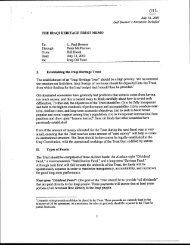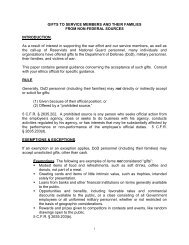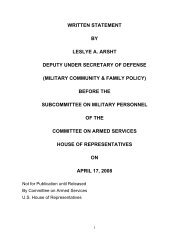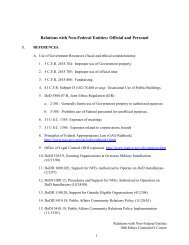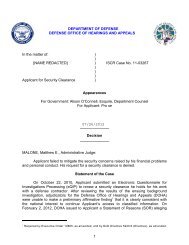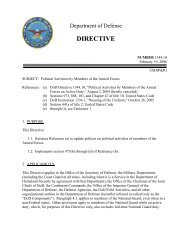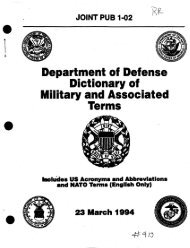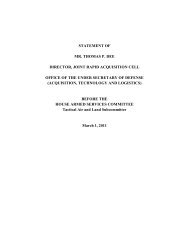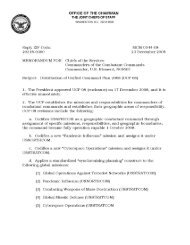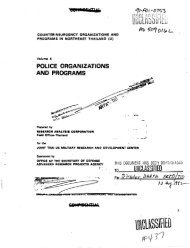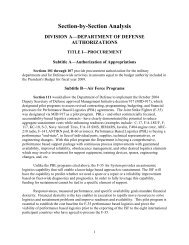dod tactical herbicide sites - United States Department of Defense
dod tactical herbicide sites - United States Department of Defense
dod tactical herbicide sites - United States Department of Defense
Create successful ePaper yourself
Turn your PDF publications into a flip-book with our unique Google optimized e-Paper software.
Assessment: On 8 October 1973, tests were initiated with the Marquardt incineratorsystem to evaluate the incineration <strong>of</strong> Herbicide Orange in a commercial incinerator overa range <strong>of</strong> selected conditions. Particular emphasis was placed on the ability <strong>of</strong> theincinerator to destroy the parts-per-million quantities (11-16 mg/kg) <strong>of</strong> 2,3,7,8-tetrachlorodibenzo-p-dioxin (TCDD) present in the <strong>herbicide</strong>. A total <strong>of</strong> 30.5 hours <strong>of</strong>burn time on undiluted Herbicide Orange fuel was accumulated during eight record burnperiods. Test data demonstrated that the incineration system operated very satisfactorilyusing undiluted “Orange” Herbicide as a fuel and that the <strong>herbicide</strong> and TCDD waseffectively and safely destroyed in the combustion process.The tests were accomplished between 8 October 1973 and 21 December 1973 at the AirForce-Marquardt Jet Laboratory, Van Nuys, California. During the conduct <strong>of</strong> the tests,twelve military personnel from the USAF Environmental Health Laboratories at KellyAir Force Base, Texas and McClellan Air Force Base, California performed the gassampling, scrubber water sampling, biomonitoring, noise testing, drum cleaningexperiments, and the combustion and scrubbed effluent gas monitoring.With the success <strong>of</strong> the Marquardt studies, the Under Secretary <strong>of</strong> the Air Force(Installations and Environment) recommended that the site location for a commericalincinerator was probably the most important factor for the disposal <strong>of</strong> Herbicide Orange.In 1976, the Air Force selected at-sea incineration aboard the M/T Vulcanus, a Dutchownedincinerator ship, to destroy the <strong>herbicide</strong> in Operation PACER HO (to bedescribed in the leaflets for the Naval Construction Battalion Center, Gulfport,Mississippi, and Johnston Island, Central Pacific Ocean).Sources: <strong>Department</strong> <strong>of</strong> the Air Force (1974): Final Environmental Statement on theDisposition <strong>of</strong> Orange Herbicide by Incineration. November 1974, <strong>Department</strong> <strong>of</strong> the AirForce, Washington, DC. Unclassified, available for public distribution.Air Force Logistics Command (1976): Historical Records – Project on the Disposition <strong>of</strong>Herbicide Orange. Office <strong>of</strong> History, Air Force Logistics Command Archives, Wright-Patterson Air Force Base, Ohio.Miller RA, Shafts PA, Stieritz SF, Termena BJ (1980): The Disposal <strong>of</strong> HerbicideOrange, 1971-1979. Office <strong>of</strong> History, Air Force Logistics Command, Wright-PattersonAir Force Base, Ohio.68



